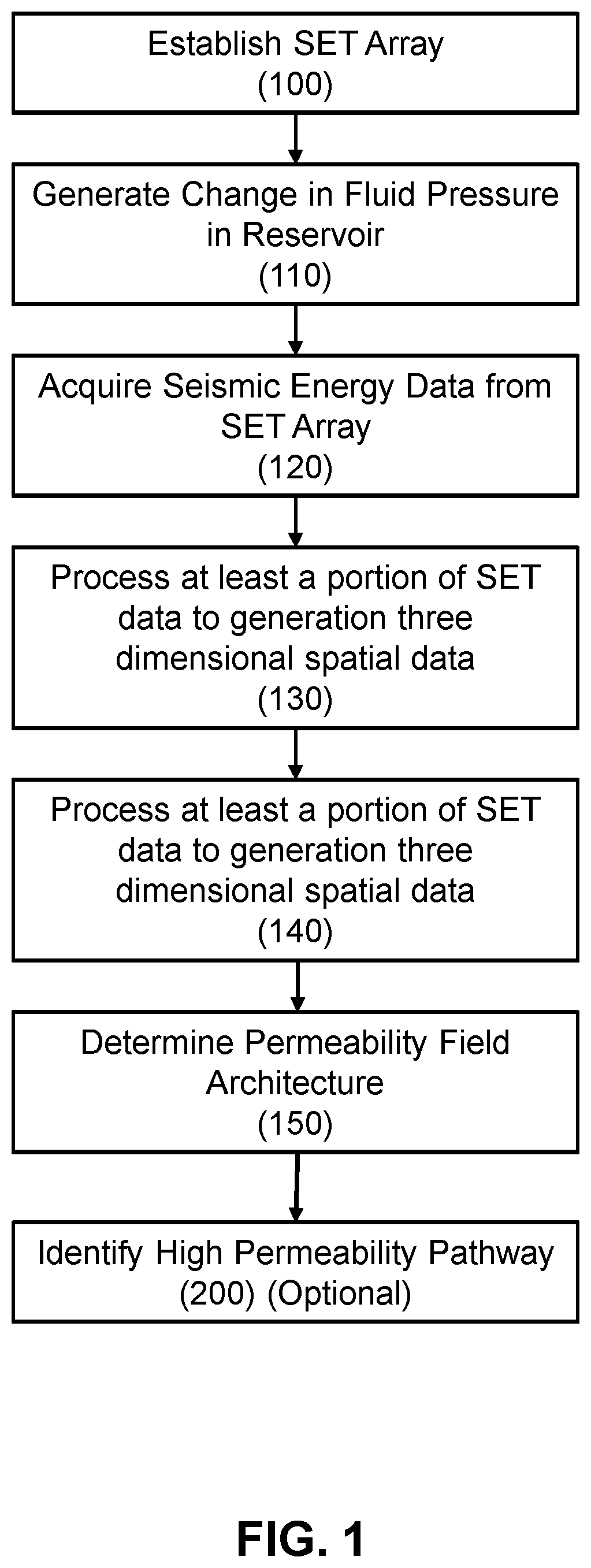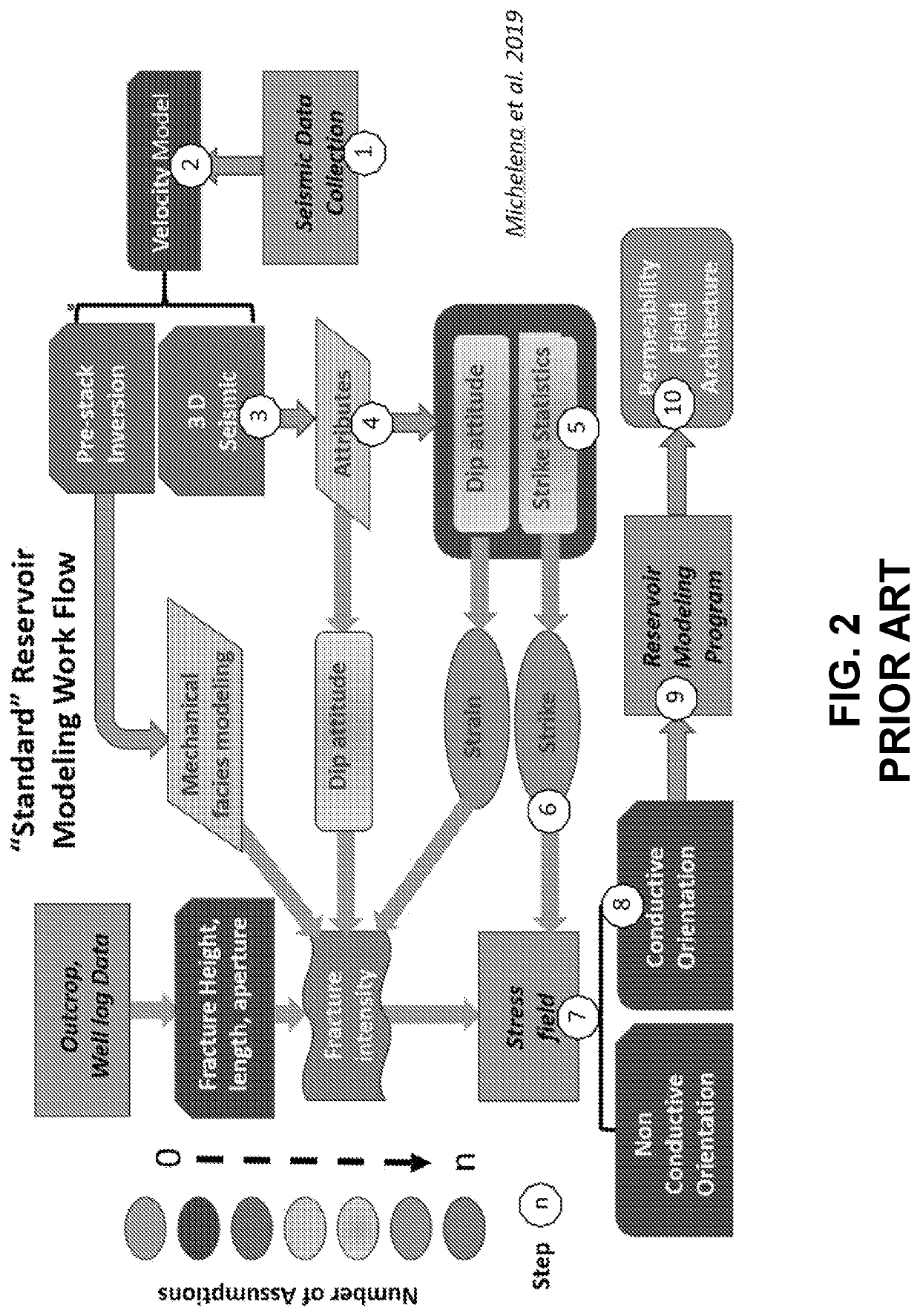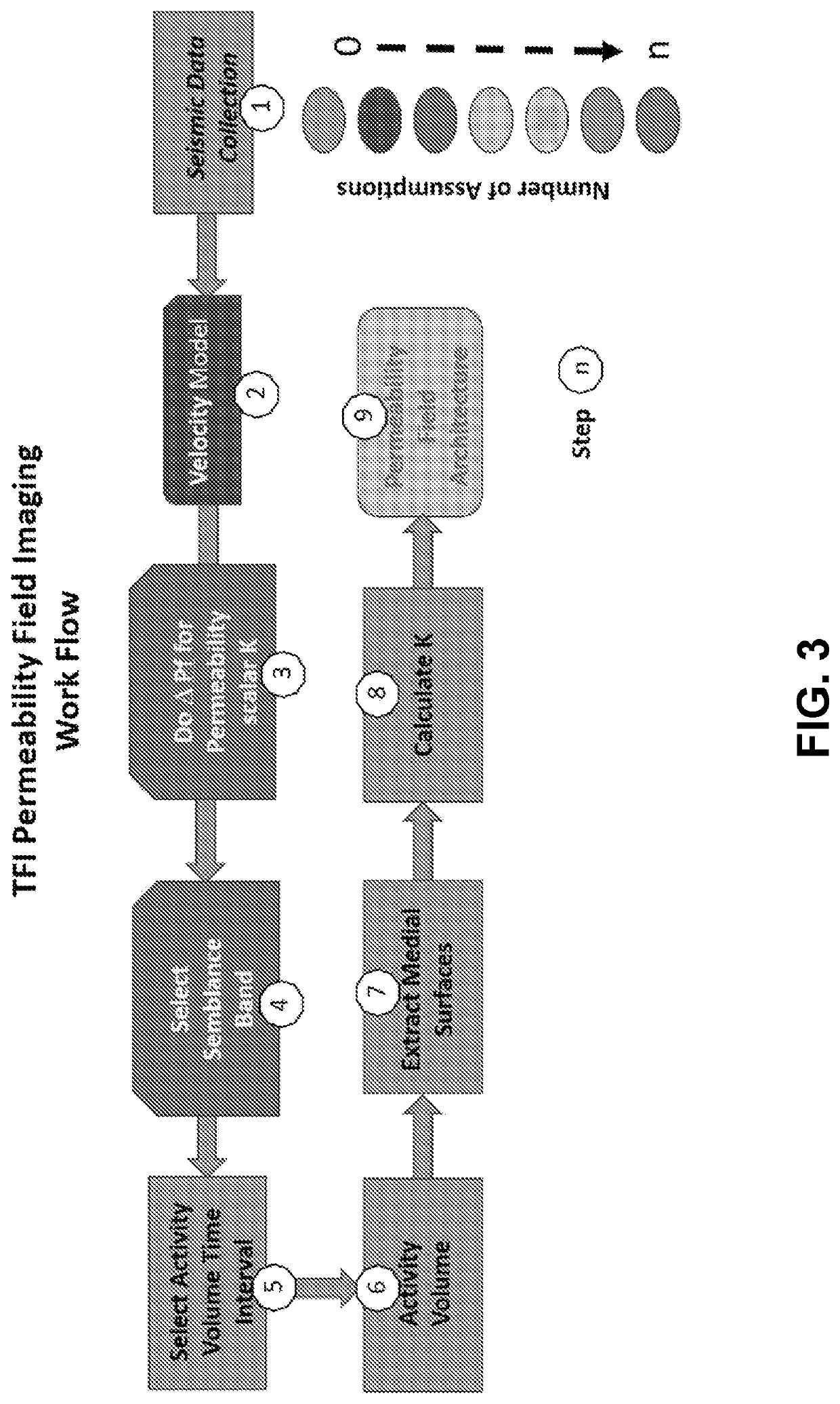Methods for creating a critical crust reservoir model
- Summary
- Abstract
- Description
- Claims
- Application Information
AI Technical Summary
Benefits of technology
Problems solved by technology
Method used
Image
Examples
example 1
The Use of Tomographic Fracture Imaging (TFI) for Determining Reservoir Permeability Fields and Ambient Fracture Networks: a Comparison with Existing Methods
[0061]The method described herein relates to the problem of providing accurate and precise spatial information on reservoir permeability field architecture for reservoir models. The Earth's brittle crust is a self-organizing critical (SOC) system. The permeability architecture created by the SOC system consists of highly heterogeneous permeability pathways. The size / frequency distribution of these pathways follows the Gutenberg-Richter (G-R) power law statistics resulting in a permeability field dominated by a few kilometer scale high permeability fracture / fault pathways. These large features lie on the numeric tail of the power law distribution however because they arise as a product of an SOC system their spatial locations cannot be predicted. Because they dominate the permeability field, their accurate and precise location is...
example 2
REFERENCES FOR EXAMPLE 2
[0157]Alvarez, W., Engelder, T., and Geiser, P. A., 1978. Classification of solution cleavage in pelagic limestones. Geology, 6 (5), 263-266.
[0158]Angus, D. A. and Verdon, J. P., 2012; Using micro-seismicity to estimate formation permeability for geological storage of CO2, Research Article available from Academia.
[0159]Bak, P., 1996, How Nature Works: The science of self-organized criticality, Springer-Verlag, New York, 212 pp.
[0160]Biot, M. A. 1962. Mechanics of deformation and acoustic propagation in porous media. J. appl. Physics, 33, 1482-1498.
[0161]Erslav, E. F., 1998, Limited, localized nonvolatile element flux and volume changein Appalachian slates, GSA Bulletin, July 1998; v. 110; no. 7; p. 900-915.
[0162]Geiser, P. A., 1974. Cleavage in some sedimentary rocks of the Central Valley and Ridge Province, Maryland. Geol. Soc. Amer. Bull., 85, 1399-1412.
[0163]Geiser, P. A., and Sansone, S., 1981. Joints, microfractures, and the formation of solution cleavag...
PUM
 Login to View More
Login to View More Abstract
Description
Claims
Application Information
 Login to View More
Login to View More - R&D
- Intellectual Property
- Life Sciences
- Materials
- Tech Scout
- Unparalleled Data Quality
- Higher Quality Content
- 60% Fewer Hallucinations
Browse by: Latest US Patents, China's latest patents, Technical Efficacy Thesaurus, Application Domain, Technology Topic, Popular Technical Reports.
© 2025 PatSnap. All rights reserved.Legal|Privacy policy|Modern Slavery Act Transparency Statement|Sitemap|About US| Contact US: help@patsnap.com



